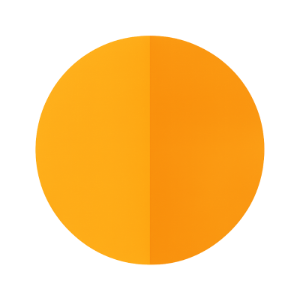Do you have a hobby or a project you just can’t let go of? Maybe two hobbies? Maybe one every couple of months, and seems to fill large gaps of your life? Your attention? Your time like a vacuum of minutes and hours? You might be experiencing hyperfixation.
What Is Hyperfixation?
It’s not just paying attention. It’s more like paying attention on five or six Red Bulls. Stopping, then starting it all up again. In neurological terms, it’s the dopamine-driven reward system of the brain locking in and refusing to shift gears.
Scientists see this in ADHD brains, especially when a task activates interest; it can light up brain pathways that make everything else fall into the background.
For some, this can look like brilliance. Some people will spend hours creating new things, learning a language, or building structures that eclipse all others. While that can have its benefits, this kind of focus can also be a bit of a trap. When one thing or idea gets all the attention, it can get so intense that eating, sleeping, and responsibilities dissolve into the background noise.
Hyperfixation is both a gift and a potential stumbling block, depending on how it’s managed.
What It Looks Like in Real Life
New crafts, new obsessions, high amounts of energy on a task that is before you that feels like the blossoming of a passionate interest. If you’ve ever had twenty unfinished hobbies in the garage, you might know what hyperfixation feels like.
People sometimes confuse hyperfixation with hyperfocus. Hyperfocus is a short-term tunnel vision lasting hours, while hyperfixation is the longer pattern of cycling obsessions that can stretch for weeks or months.
It can be exhilarating, but it can also mean feeling scattered, guilty, or even burned out once the fire dies down.
Is this why you’ve got five guitars, half a garden, and a sketchbook with only three finished pages? Probably.
Hyperfixation often fuels the start but rarely sustains the long-term maintenance of things. And that, biologically speaking, makes sense—dopamine peaks when novelty hits, and then plummets once the routine begins.

Is Hyperfixation Normal—or Something More?
Here’s the truth: everyone has periods of hyperfixation. Athletes call it flow, artists call it inspiration, entrepreneurs call it grit. But when it begins to interfere with daily life, relationships, or health, it’s no longer just a quirk. It’s something we should look at with a critical eye.
Not always, but there are times when ADHD, autism spectrum conditions, and certain mood disorders often carry this brain wiring. For many people, hyperfixation isn’t a disorder in itself—it’s a symptom of a broader way your brain functions.
If you find yourself unable to disengage, losing sleep, or struggling to balance basic needs, that’s when it is impacting your daily life. This is also when it is a good idea to look into some options for hyperfixation management.
When Is Hyperfixation a Problem?
You know it’s a problem when it feels less like inspiration and more like compulsion. When hyperfixation means a loss of daily realities. When the joy of immersion turns into a kind of cage.
At its worst, it can resemble obsessive thinking, with almost no relief available.
And here’s where it gets tricky: it can feel productive.
You might be completing projects at lightning speed or researching a topic so deeply you could write the book. But if your relationships are fraying, your job is suffering, or your health is ignored, the cost is too much.
How to Combat Hyperfixation
Learning to step back from hyperfixation isn’t about killing curiosity. It’s about boundaries. Even curiosity or attention needs these. The brain thrives on stimulation, but it also thrives on balance.
Here are a few strategies that can help:
- Setting time limits and external reminders (use your phone like a gentle nudge)
- Practicing mindfulness to notice when you’re slipping into the tunnel
- Choosing accountability partners—people who can pull you back into the wider world
- Scheduling breaks as deliberately as you schedule projects
- Seeking hyperfixation help through therapy or coaching to rewire habits
The point isn’t to put out the fire. It’s to keep the fire in the fireplace, so it doesn’t end up burning the whole house down.
How Mental Health Treatment Helps
Therapy and structured treatment offer tools that go deeper than alarms and sticky notes. Cognitive-behavioral approaches, for instance, help you identify the triggers and emotional drivers behind hyperfixation.
Medication, particularly in ADHD, can stabilize everything, so focus becomes a dimmer, not just an on/off switch.
And treatment isn’t just about symptom management. It’s about widening the lens: reminding you that life is not meant to be reduced to a single obsession, no matter how fascinating.
In mental health treatment for hyperfixation, you learn how to channel that deep-focus energy toward sustainable, balanced living. You can keep your passion without letting it become your prison.
Get Mental Health Therapy for Hyperfixation in Palm Springs
Hyperfixation isn’t a character flaw—it’s a brain pattern.
And brains can learn new ways to operate with the right support. If hyperfixation has you stuck, it may be time to reach out. Balance, focus, and well-being are possible.
Mental health treatment can help. SolutionPoint in Palm Springs provides expert care tailored to the complexities of ADHD, mood disorders, and attention-related challenges.
Call today for more information: 833-773-3869.




